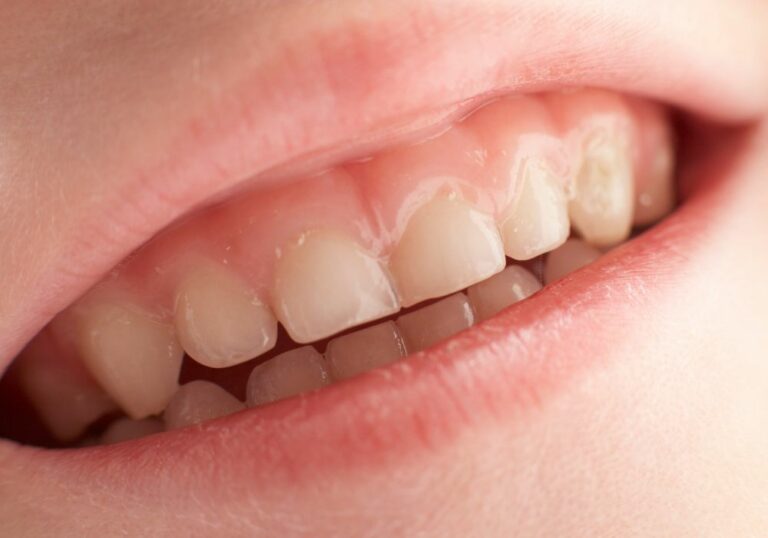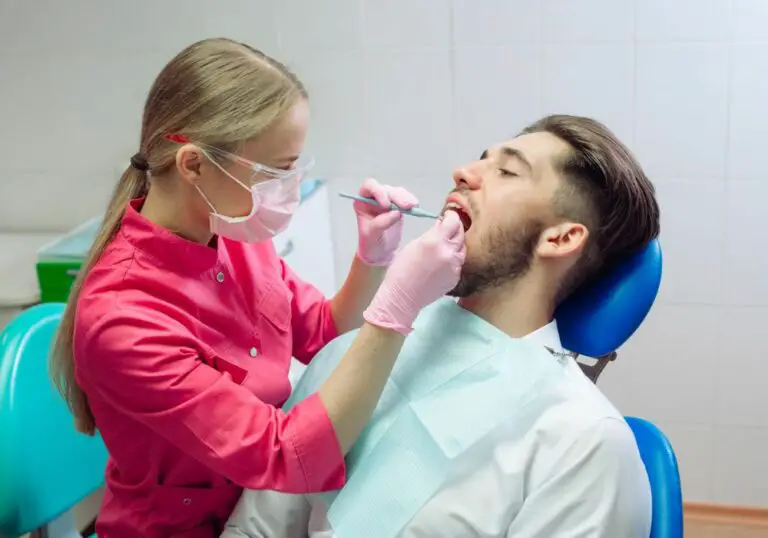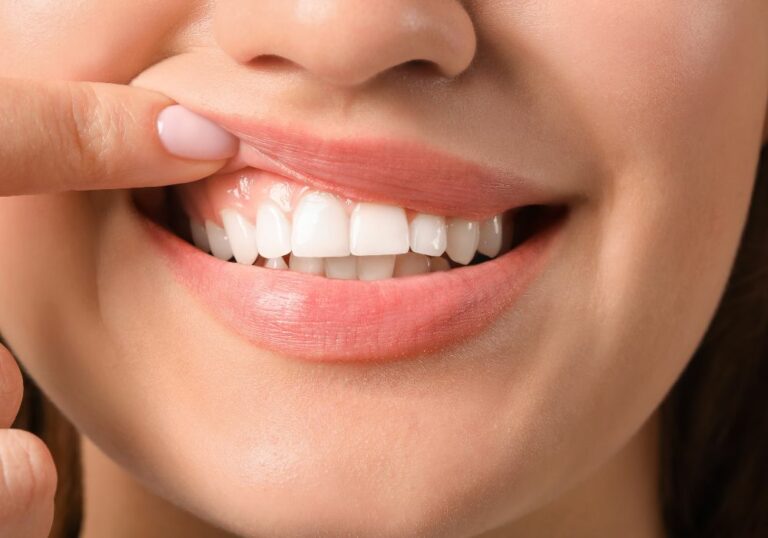What is teething and why is it painful?
Teething is the process by which babies’ teeth emerge through the gums as they transition from a toothless newborn to a child with a full set of 20 primary teeth. It usually begins around 6 months and continues until 3 years old as the teeth push through the gums one by one.
This process can be quite painful and uncomfortable for babies. The pressure of the tooth cutting through the gum tissue causes swelling, inflammation, and sensitivity. The gums can become tender, sore, itchy, and throbbing. Some babies even develop mild fever or diarrhea during especially difficult teething periods.
The pain is often worse at night which disrupts sleep, and some babies have trouble nursing or feeding. Increased drooling is very common as the irritation prompts increased saliva production. Teething may cause crankiness, crying fits, and generally fussy behavior in previously happy babies due to the discomfort.
While teething is a normal part of development, it can distress babies and makes it harder for parents to soothe their child. Various remedies and medications have been developed to provide teething relief and make this phase easier to cope with.
What is teething gel?
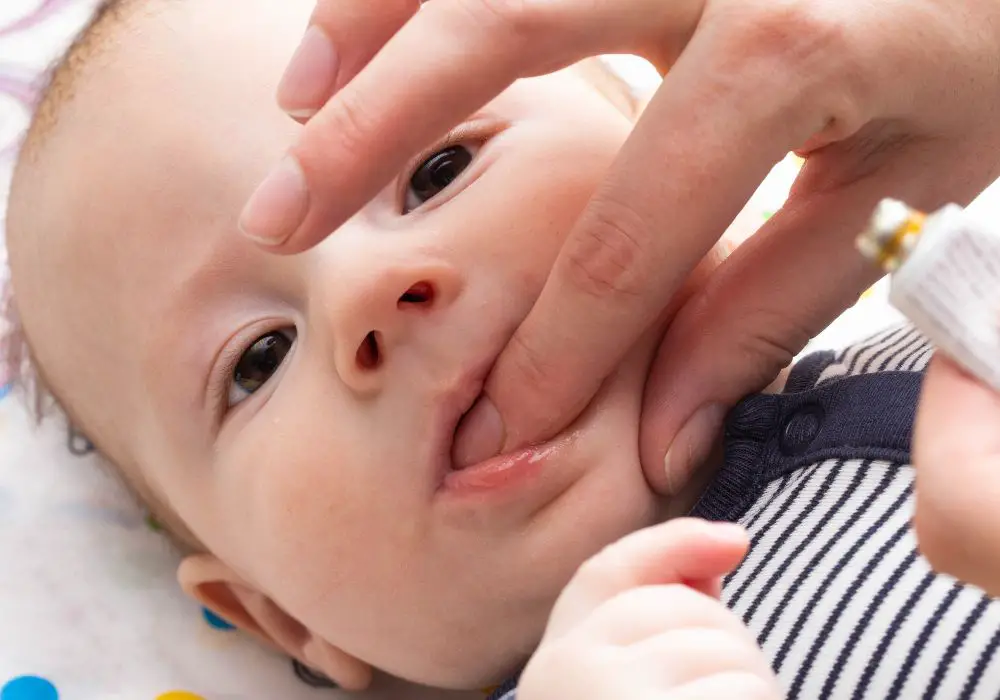
Teething gel is a topical medication that is rubbed directly onto the gums to ease teething pain and discomfort. It provides a numbing sensation to relieve soreness in the gum tissue.
The active ingredients in teething gels work as anesthetics to temporarily numb the localized area. Common ingredients include benzocaine, lidocaine, or herbal extracts like chamomile which have mild numbing effects when applied to the gums. Some gels also contain soothing agents like glycerin, vitamin E, and allantoin to moisturize the gums and accelerate healing.
Teething gels come in gel, ointment, or cream forms that are formulated to adhere to the gums for faster pain relief and numbness. They are usually applied using a clean finger, cotton swab or directly on the applicator brush in the bottle. The effects typically last from 20 minutes up to 2 hours.
Teething gels can provide quick short-term relief for sore irritated gums when used cautiously under pediatric guidance. However, they aren’t meant for long-term or constant use due to risks of overdose. Understanding correct usage guidelines is key for safety.
How do common ingredients in teething gels work?
Some key anesthetic ingredients in popular teething gels and their mechanisms of action:
Benzocaine
- Anesthetic that temporarily blocks nerve signals that detect pain and irritation
- Reduces conductivity of nerve fibers in localized numbness effect
- Frequently used topical analgesic for minor mouth and gum discomfort
- Maximum recommended dose is 7.5mg/kg orally
Lidocaine
- Another local anesthetic that prevents nerve signal transmission
- Stabilizes nerve membrane to inhibit depolarization that causes pain signals
- Often used in dental procedures for numbing
- Toxicity can occur if high levels enter bloodstream
Chamomile extract
- Herbal derivative with mild anesthetic and anti-inflammatory effects
- Contains compound chamazulene that reduces leukotriene to relieve swelling
- Flavonoids in chamomile also have soothing properties to relieve discomfort
- Topical application is generally safe but can cause allergic reaction in some
Glycerin
- Has a cooling, lubricating effect on irritated oral tissues
- Prevents gum dryness and chapping which can worsen pain
- Also helps transmit the analgesic ingredients into the gums
Vitamin E
- Has antioxidant properties that protect the gums and accelerate healing
- Stimulates new cell growth and circulation
Allantoin
- Promotes cell regeneration and wound healing
- Has a mild keratolytic effect to soften and soothe the gums
These ingredients work together to both numb gums using anesthetics and promote gum healing with natural extracts and emollients. But improper use can also increase risks. Understanding how these components help provide teething relief allows safer application.
Are there any risks or side effects?
When used correctly under the guidance of a pediatrician, teething gels are generally safe for babies. However, some potential adverse effects include:
Numbing of mouth or throat
As babies tend to swallow excess gel, it can temporarily numb areas like the tongue, mouth, throat, and esophagus. This poses a risk of choking if it interferes with the swallowing reflex. Overuse must be avoided.
Methemoglobinemia
Excessive use of benzocaine can cause methemoglobinemia where the blood cannot carry sufficient oxygen. Infants under 6 months old are most at risk of this rare but life-threatening complication.
Allergic reactions
Ingredients may trigger allergic responses like rashes, hives, facial swelling or wheezing in those with sensitivities, especially to herbal components. Discontinue use immediately if such reactions appear.
Incorrect dosing
Applying too much gel, reapplying too often, or using with oral benzocaine meds can cause accidental overdose and toxicity. Following dosage guidelines is critical.
Interference with feeding
Constant gum numbness can interfere with baby’s ability to latch properly during breast or bottle feeding. Appropriate application around feeds is needed.
To minimize side effect risks, pediatricians recommend:
- Using lowest effective benzocaine dose under 7.5%
- Applying thinnest layer needed for relief
- Avoiding excessive gum coverage
- Letting gels wear off fully between use
- Keeping total daily use within limits
- Monitoring baby closely for reactions
- Stopping gels if reactions occur
While quite rare, side effects can become serious in some cases. Working closely with your doctor ensures maximum teething relief with minimal risk. Never exceed the recommended use guidelines.
Are “natural” teething gels safe?
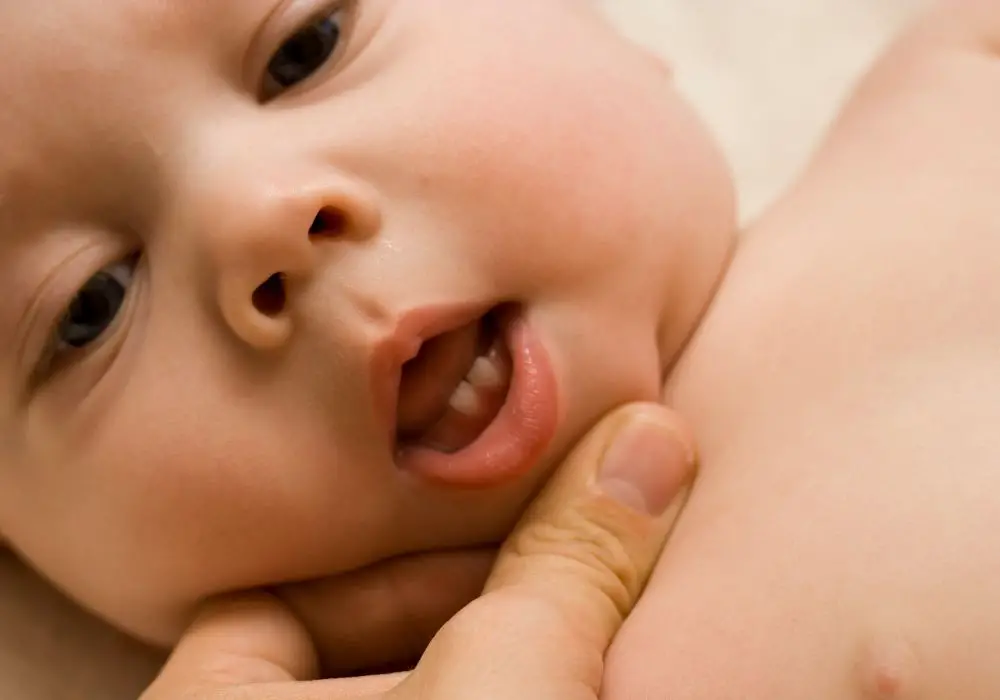
Some non-traditional teething gels are marketed as “natural” or “homeopathic” alternatives with herbal ingredients. However, these products are not regulated by the FDA for safety or potency.
Many contain undisclosed levels of belladonna extract which is toxic and can have serious side effects like seizures, breathing difficulty, and even death in small doses. The FDA warns strongly against using such products without medical guidance.
While the herbal components may sound safer, the concentrations are uncontrolled and unpredictable. Effects can vary widely between brands. Always consult your pediatrician before trying herbal teething gels on your baby.
The anesthetic doses in approved OTC teething gels have undergone clinical testing for safety when used properly. While no medication is 100% risk-free, regulated teething gels are generally the safer option over inconsistent homeopathic products of uncertain composition.
When should teething gels be avoided?
There are some situations where pediatricians recommend avoiding the use of teething gels:
Under 4 months of age:
The gag reflex is still developing at this age, so any gum numbness poses a choking hazard. Teething gels are only considered safe starting around 4-6 months or as first teeth emerge, unless otherwise advised.
Wounded or broken gums:
Applying gel over damaged gum tissue can increase absorption into the bloodstream and toxicity. It also impedes healing. Best to avoid until gums are healed.
Underlying medical conditions:
Babies with anemia, breathing issues, low immunity, hypotonia, or other disorders may be at higher risk of complications from the ingredients. Seek medical guidance first.
Taking certain medications:
The anesthetic action may interact with drugs baby is taking for other conditions. Check with pediatrician for contraindications.
Prolonged or chronic use:
Using gels daily or continuously can lead to accidental overmedication. Only for temporary relief of acute gum discomfort, not long-term use.
Parents should inform doctors about any health issues and all medications the baby is on before considering teething gels. While they can help relieve teething pain at the appropriate times, gels are not appropriate for all infants in all scenarios. When in doubt, check with your pediatrician first.
Tips for safe application of teething gel
When using teething gels, follow these precautions:
- Use only baby-formulated gels, never adult oral gels
- Check label for proper dosage by weight and age. Never exceed.
- Wash hands thoroughly before applying gel on gums
- Place baby on back, gently apply thin layer only on sore areas
- Use finger, cotton swab or brush – avoid spreading excess gel
- Don’t rub gel into wounded gums or gums with rash
- Let gels wear off fully before reapplying (1-2 hours)
- Wipe away drool and any excess gel swallowed
- Reapply sparingly only if baby remains in discomfort
- Do not use for more than 4 applications daily
- Avoid use at night or close to feeding times
- Discontinue gel if reactions or unchanged discomfort
- Never use gels as an alternative to dental treatment
- Consult pediatrician if symptoms don’t improve within 24 hours
Proper usage techniques maximize therapeutic benefits while reducing the risks. Never use teething gels casually without appropriate care and precautions. Close supervision is key to safety.
Signs of adverse reaction

Discontinue gel use and call your doctor right away if you notice these signs after applying teething gel:
- Rash, redness or swelling of gums/lips/face
- Wheezing, breathing trouble
- Fever over 100.4F
- Excess drooling or difficulty swallowing
- Headaches, dizziness, confusion
- Paleness, blueness or coldness of lips/fingers
- Constipation or diarrhea
- Unusual drowsiness or sleepiness
- Choking/gagging on saliva
- Marked irritability or non-stop crying
- Lack of appetite, refusal to feed
- No pain relief within 10-15 minutes
Do not attempt to self-medicate or increase gel use if adverse effects appear. Prompt professional evaluation is required whenever concerning symptoms develop following gel application. Safety must take absolute priority.
Alternative teething remedies
Some parents prefer to try natural home remedies first before considering medication:
Cold objects – Chilled (not frozen) teething toys from the fridge provide numbing relief as the low temperature soothes inflamed nerves. Great options include teething rings, wet washcloths, frozen banana or refrigerated bag of frozen fruit.
Gentle gum massage – Light finger pressure rubbing the gums increases circulation and reduces swelling. Can provide comfort if done carefully.
OTC pain relievers – Children’s Tylenol (acetaminophen) or Advil (ibuprofen) to reduce inflammation and discomfort systemically. Consult pediatrician on safe dosing.
Distraction – Sometimes attention can be diverted from teething pain by introducing new toys, books, songs or comfort items. Allows baby to refocus.
Sit upright positions – Holding baby in a seated position minimizes drooling and pooling of saliva that can aggravate gum irritation. Gravity helps reduce swelling.
Improve nursing position – Adjusting baby’s latch and nursing angle can allow feeding with minimal discomfort. Let baby pause to massage gums if needed.
Drinking cold liquids – Sipping small amounts of cooled boiled water or chilled breastmilk can temporarily numb the gums. The cold soothes inflamed tissue.
However, if home remedies provide inadequate relief from severe teething discomfort, a pediatrician may advise introducing teething gels as needed under proper supervision. Never force a baby in pain to avoid medicine entirely. Some professional pain relief may be warranted to control excessive fussiness and crying until the tooth breaks the gum.
When to call the pediatrician
Contact your pediatrician promptly if:
- Baby has adverse reaction to any teething gel
- Teething pain persists for over 3 days unaffected by gel/meds
- Gums remain red, swollen or develop sores/blisters
- Oral thrush develops along with teething
- Fever over 100.4F rectally or refusing to eat
- Severe drooling interferes with swallowing
- Symptoms like ear pulling, diarrhea or sleeping issues arise
- Gel does not relieve pain within 10-15 mins of application
- Discomfort seems extreme/non-stop crying continues
While teething causes some fussiness, excess pain or other symptoms may indicate infection or other problems needing medical evaluation. Don’t simply increase gel usage to mask an undiagnosed condition. Instead, consult your pediatrician at the earliest sign of anything concerning.
Teething gel FAQs
Q: Can I use Orajel or other adult oral gels on baby?
A: No, only use gels formulated specifically for infants as the dosage suits their age and size. Adult oral gels contain too much benzocaine and other ingredients that can overwhelm a baby’s system. Never use adult dental products unless explicitly advised by your pediatrician.
Q: How often can I apply teething gel in one day?
A: Most brands recommend no more than 1-2 hourly applications when needed up to 4 times daily. More frequent use reduces efficacy and increases risks. Follow instructions based on baby’s weight and age. Consult doctor if pain seems unmanageable with OTC gels.
Q: Should I put gel before every feeding session?
A: No, teething gel should only be used when baby is showing clear discomfort, not as part of a set routine. Try alternative remedies first for mild fussiness before immediately applying gels which can lead to overmedication over time.
Q: Can I leave teething gel on overnight for teething pain?
A: It’s inadvisable to leave gels on for extended periods or overnight. Reapply only during awake hours where baby can be monitored since the prolonged numbing effect raises choking risk. Exceptional cases may warrant overnight use but pediatrician should prescribe appropriate products and dosage.
Q: Is using OTC pain meds with gel usage safe?
A: It’s best to avoid using teething gels along with oral pain meds simultaneously unless specifically advised by your doctor. Combined effects of multiple pain relievers can lead to accidental overdose. Always confirm with pediatrician first before using multiple products.
Conclusion
Teething can be a stressful period for families but there are safe ways to ease the discomfort using OTC remedies like gels under medical guidance. When applied correctly, teething gels can provide temporary numbness and pain relief. But improper use also poses some risks requiring vigilance on parent’s part.
Work closely with your pediatrician to determine if teething gel is suitable for your baby’s situation. If chosen as a teething aid, adhere strictly to the recommended usage guidelines and watch for any concerning side effects. But also be open to trying other natural remedies first before turning to medication. With some care and precaution, teething gels can be helpful but should be just one option in a toolkit of solutions to soothe your little one’s sore gums.


